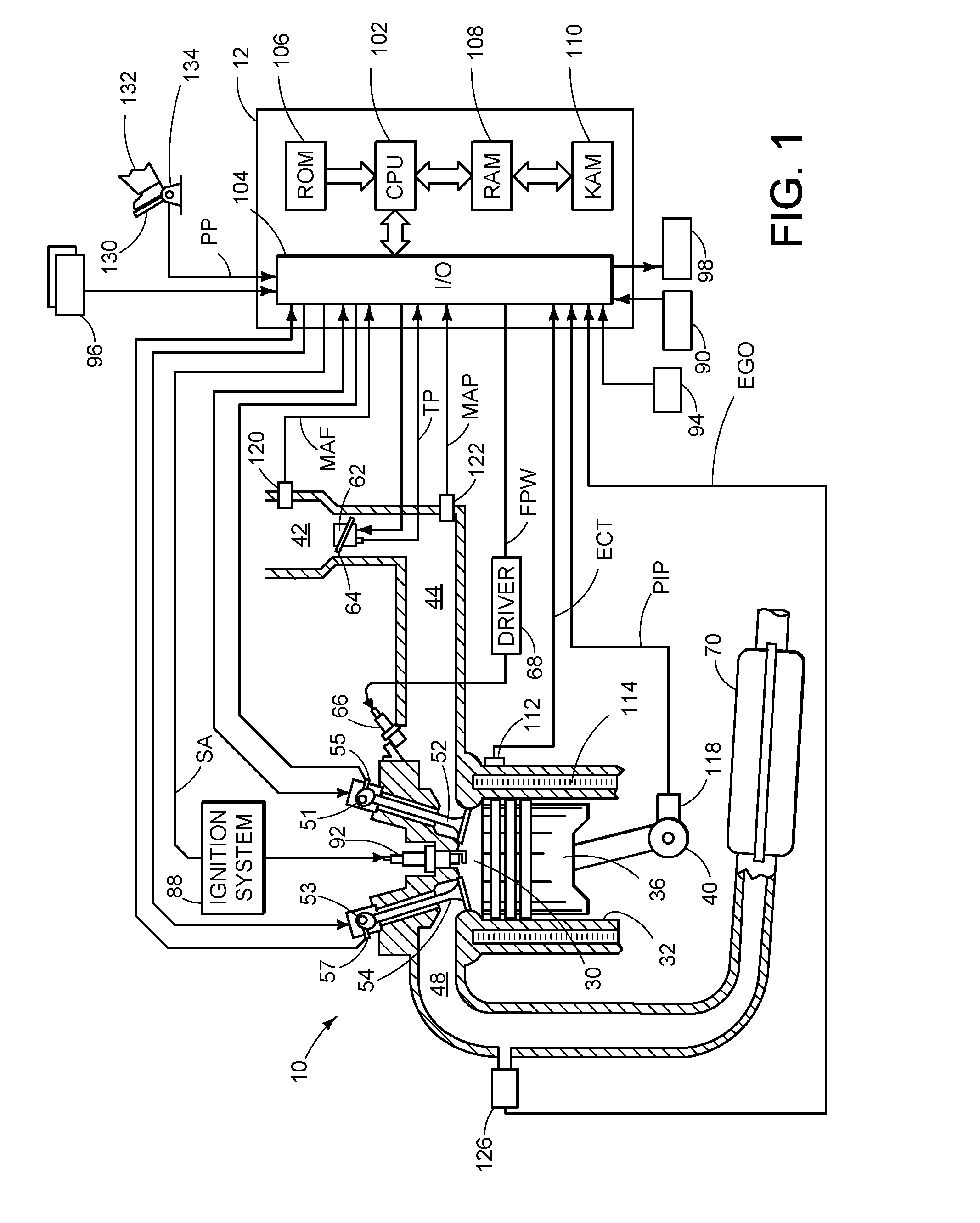Engine Response Adjustment Based on Traffic Conditions
a technology of engine response and traffic conditions, applied in the direction of electric control, brake systems, instruments, etc., can solve problems such as feeling sluggish, and achieve the effects of improving fuel economy, reducing emissions, and increasing fuel economy
- Summary
- Abstract
- Description
- Claims
- Application Information
AI Technical Summary
Benefits of technology
Problems solved by technology
Method used
Image
Examples
Embodiment Construction
[0010]FIG. 1 shows a schematic diagram of one cylinder of multi-cylinder internal combustion engine 10. Combustion chamber or cylinder 30 of engine 10 is shown including combustion chamber walls 32 and piston 36 positioned therein and connected to crankshaft 40. A starter motor (not shown) may be coupled to crankshaft 40 via a flywheel (not shown). Cylinder 30 may communicate with intake port 44 and exhaust port 48 via respective intake valve 52 and exhaust valve 54. Intake valve 52 and exhaust valve 54 may be actuated via intake camshaft 51 and exhaust camshaft 53. Further, the position of intake camshaft 51 and exhaust camshaft 53 may be monitored by intake camshaft sensor 55 and exhaust camshaft sensor 57 respectively. Intake and / or exhaust valve control may also be provided by signals supplied by controller 12 via electric valve actuation (EVA). Additionally intake and exhaust valves may be controlled by various other mechanical control systems including cam profile switching (C...
PUM
 Login to View More
Login to View More Abstract
Description
Claims
Application Information
 Login to View More
Login to View More - R&D
- Intellectual Property
- Life Sciences
- Materials
- Tech Scout
- Unparalleled Data Quality
- Higher Quality Content
- 60% Fewer Hallucinations
Browse by: Latest US Patents, China's latest patents, Technical Efficacy Thesaurus, Application Domain, Technology Topic, Popular Technical Reports.
© 2025 PatSnap. All rights reserved.Legal|Privacy policy|Modern Slavery Act Transparency Statement|Sitemap|About US| Contact US: help@patsnap.com



